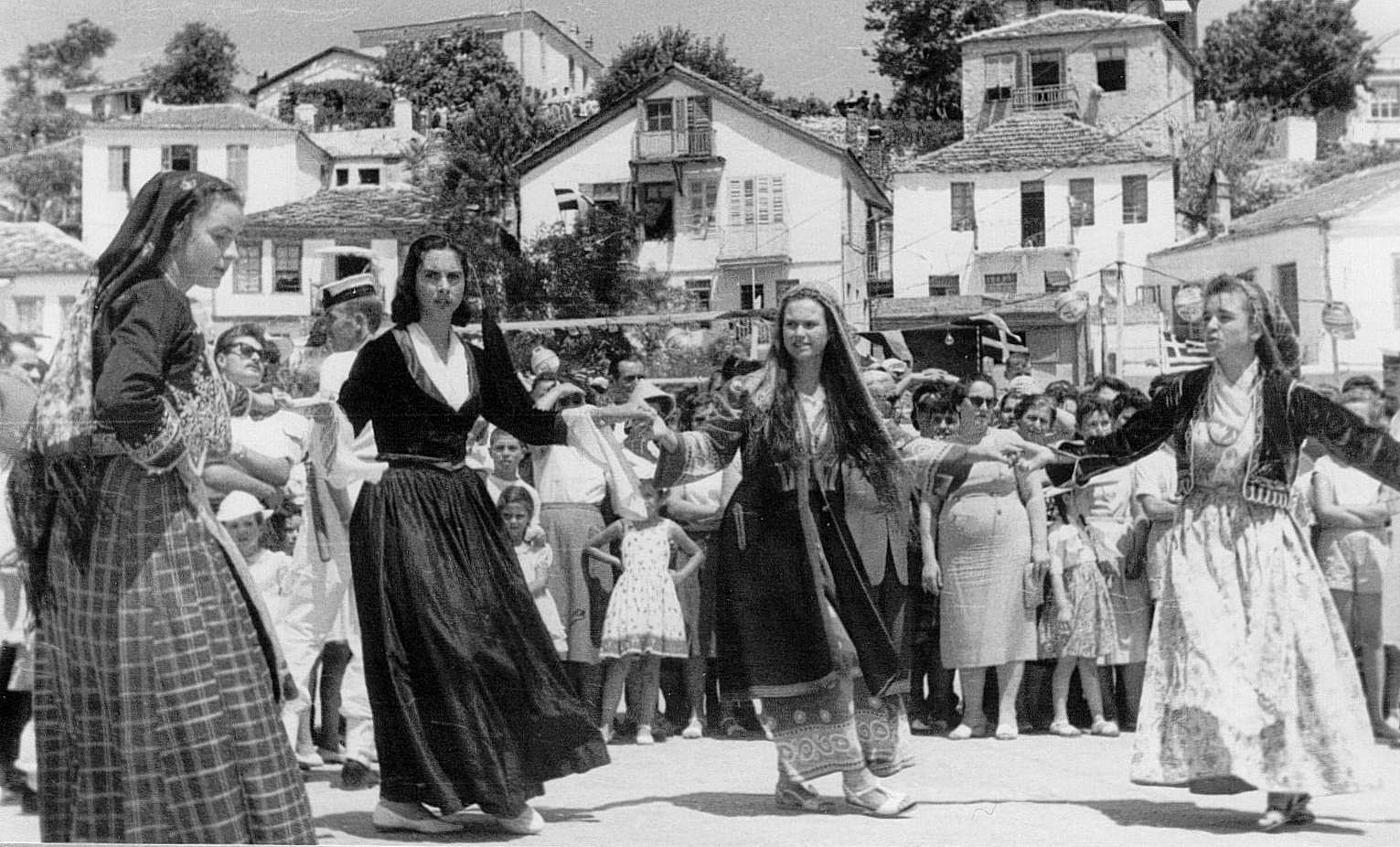|
Antikristos
Antikristos or Antikrystós ( el, αντικρυστός χορός) is a dance of Greek origin. “Aντικρυστός” in Greek language refers to the verb αντικρύζω “be across, opposite, face-to-face” (from Ancient Greek ἀντικρύ “vis-à-vis, face-to-face”). It is also known in Armenia. Antikristos has similarities with the karsilamas dance. It is danced in couples. See also *Greek music *Kalamatianos *Kamilierikos *Syrtos *Greek dances *Greek folk music *Ballos *Horon Horon ( pnt, χορόν, khorón) is a traditional folk dance from Pontus or Eastern Black Sea Region in Turkey. Name Etymology The term ''horon'' derives from Greek '' choros'' ( el, χορός, khorós), which means "dance." The earliest in ... References Greek dances Greek music Greek words and phrases Cypriot music Armenian dances Assyrian dances Bulgarian dances Iranian dances {{folk-dance-stub ... [...More Info...] [...Related Items...] OR: [Wikipedia] [Google] [Baidu] |
Greek Dance
Greek dance (''choros'') is a very old tradition, being referred to by authors such as Plato, Aristotle, Plutarch and Lucian. There are different styles and interpretations from all of the islands and surrounding mainland areas. Each region formed its own choreography and style to fit in with their own ways. For example, island dances have more of a different smooth flow to them, while Pontic dancing closer to the Black Sea, is very sharp. There are over 10,000 traditional dances that come from all regions of Greece. There are also pan-Hellenic dances, which have been adopted throughout the Greek world. These include specifically the Syrtos, Kalamatianos, Pyrrhichios, Ballos and hasapiko. Traditional Greek dancing has a primarily social function. It brings the community together at key points of the year, such as Easter, the grape harvest or patronal festivals; and at key points in the lives of individuals and families, such as weddings. For this reason, tradition frequently dicta ... [...More Info...] [...Related Items...] OR: [Wikipedia] [Google] [Baidu] |
Kamilierikos
Kamilierikos ( el, καμηλιέρικος χορός) or kamilieriko, is a kind of a Greek traditional dance, similar to fast zeibekiko and antikristos. Like zeibekiko, Kamilierikos is again in "9/8" signature and was danced by the . Today, kamilierikos is very widespread in and laiko music traditions. See also * |
Cypriot Music
The music of Cyprus includes a variety of traditional, Western classical and Western popular genres. Cypriot traditional music is similar to the traditional music of Greece with Turkish and Arab influences, and includes dances like sousta, syrtos, ballos, tatsia, antikristos, arabiye, karotseris, sinalik, chiftetteli, zeimbekiko and the mandra dance. History Medieval music Cyprus changed hands numerous times prior to the medieval era, and was an important outpost of Christianity and Western European civilization during the Crusades. The island's peak as a cultural capital of Europe occurred from 1359 to 1432. During that peak, Pierre I de Lusignan made a three-year tour on Europe, bringing with him an entourage of musicians that impressed Charles V in Rheims so much that he donated 80 francs in gold to them. On his return to Cyprus, Pierre I brought with him the French Ars Nova and, later, the Ars Subtilior. French musicians became well established in Cyprus, and t ... [...More Info...] [...Related Items...] OR: [Wikipedia] [Google] [Baidu] |
Greek Folk Music
Greek traditional music (Greek: παραδοσιακή μουσική, "traditional music"; also δημοτικά τραγούδια, "folk songs") includes a variety of Greek styles played by ethnic Greeks in Greece, Cyprus, Australia, the United States and other parts of Europe. Apart from the common music found generally in Greece, each region of Greece contains a distinct type of folk music that originated from the region due to their history, traditions and cultural influences. Overview Greek folk music originally, predominantly contained one genre, known as Greek ''Demotiko (or Demotic/Paradosiako).'' This refers to the traditional Greek popular songs and music of mainland Greece and islands, which date back to the Byzantine times. It was the sole popular musical genre of the Greek people until the spread of ''Rebetiko'' and '' Laiko'' (other genres of folk music) in the early 20th century, spread by the Greek refugees from Asia Minor. This style of music evolved from ... [...More Info...] [...Related Items...] OR: [Wikipedia] [Google] [Baidu] |
Greek Dances
Greek dance (''choros'') is a very old tradition, being referred to by authors such as Plato, Aristotle, Plutarch and Lucian. There are different styles and interpretations from all of the islands and surrounding mainland areas. Each region formed its own choreography and style to fit in with their own ways. For example, island dances have more of a different smooth flow to them, while Pontic dancing closer to the Black Sea, is very sharp. There are over 10,000 traditional dances that come from all regions of Greece. There are also pan-Hellenic dances, which have been adopted throughout the Greek world. These include specifically the Syrtos, Kalamatianos, Pyrrhichios, Ballos and hasapiko. Traditional Greek dancing has a primarily social function. It brings the community together at key points of the year, such as Easter, the grape harvest or patronal festivals; and at key points in the lives of individuals and families, such as weddings. For this reason, tradition frequently dict ... [...More Info...] [...Related Items...] OR: [Wikipedia] [Google] [Baidu] |
Greek Music
The music of Greece is as diverse and celebrated as its History of Greece, history. Greek music separates into two parts: Greek folk music, Greek traditional music and Byzantine music. These compositions have existed for millennia: they originated in the Byzantine empire, Byzantine period and ancient Greek music, Greek antiquity; there is a continuous development which appears in the language, the rhythm, the structure and the melody. Music is a significant aspect of Greek culture, Hellenic culture, both within Greece and in the Greek diaspora, diaspora. Greek musical history Greek musical history extends far back into ancient Greece, since music was a major part of ancient Greek theater. Later influences from the Roman Empire, Eastern Europe and the Byzantine Empire changed the form and style of Greek music. In the 19th century, opera composers, like Nikolaos Mantzaros (1795–1872), Spyridon Xyndas (1812–1896) and Spyridon Samaras (1861–1917) and symphonists, like Dimitris ... [...More Info...] [...Related Items...] OR: [Wikipedia] [Google] [Baidu] |
Kalamatianos
The Kalamatianós ( el, Καλαματιανός) is one of the best known dances of Greece. It is a popular Greek folkdance throughout Greece, Cyprus and internationally and is often performed at many social gatherings worldwide. As is the case with most Greek folk dances, it is danced in chain with a counterclockwise rotation, the dancers holding hands. It is a joyous and festive dance; its musical beat is , subdivided into of three parts of 3+2+2 beats, corresponding to 3 steps per bar. There are 12 steps in the dance corresponding to 4 bars of music. These steps include 10 steps counterclockwise ("forward") followed by 2 steps clockwise ("backwards"). Depending on the occasion and the dancers' proficiency, certain steps may be taken as jumps or squats. The lead dancer usually holds the second dancer by a handkerchief, this allowing him or her to perform more elaborate steps and acrobatics. The steps of the Kalamatianós are the same as those of the Syrtos, but the l ... [...More Info...] [...Related Items...] OR: [Wikipedia] [Google] [Baidu] |
Karsilamas
Karsilamas (From tr, karşılama, in Greek: ) is a Turkish folk dance spread all over Northwest Turkey and carried to Greece by Anatolian Greek immigrants. The term "karşılama" means "encounter, welcoming, greeting" in Turkish. The dance is popular on Northwestern areas of Turkey, especially on wedding parties and festivals. In Greece and Cyprus there is a similar dance named, Antikrystos. Antikrystos, translates also, as "anti-face", i.e., face-to-face. Karsilamas is a couple dance that is still danced in what was the Ottoman Empire, from Persia to Serbia, and in the Macedonia and Thrace regions of Northern Greece. Figures of the dance may vary from region to region, but the main theme is two people face each other, and music rhythmically controls their next moves. Traditionally people dance without any figure on their minds, just figures they have seen from their elders. The meter is , and the basic move is danced in four small steps with durations , respectively. The st ... [...More Info...] [...Related Items...] OR: [Wikipedia] [Google] [Baidu] |
Syrtos
Syrtos ( el, συρτός, ''syrtos'' (also ''sirtos''); plural , ''syrtoi'' (also ''sirtoi''); sometimes called in English using the Greek accusative forms ''syrto'' (also ''sirto''); from the el, links=no, σύρω, ''syro'' (also ''siro''), "to drag he dance) is – in classical and modern Greece – a traditional dance in which the dancers link hands to form a chain or circle, headed by a leader who intermittently breaks away to perform improvised steps. Syrtos, along with its relative kalamatianos, are the most popular dances throughout Greece and Cyprus, and are frequently danced by the Greek diaspora worldwide. They are very popular in social gatherings, weddings and religious festivals. Syrtos and kalamatianos use the same dance steps, but the syrtos is in time and the kalamatianos is in time, organized in a ''slow'' (3 beat), ''quick'' (2 beat), ''quick'' (2 beat) rhythm. Syrtos and kalamatianos are line dances and circle dances, done with the dancers in a ... [...More Info...] [...Related Items...] OR: [Wikipedia] [Google] [Baidu] |
Greek Language
Greek ( el, label=Modern Greek, Ελληνικά, Elliniká, ; grc, Ἑλληνική, Hellēnikḗ) is an independent branch of the Indo-European family of languages, native to Greece, Cyprus, southern Italy (Calabria and Salento), southern Albania, and other regions of the Balkans, the Black Sea coast, Asia Minor, and the Eastern Mediterranean. It has the longest documented history of any Indo-European language, spanning at least 3,400 years of written records. Its writing system is the Greek alphabet, which has been used for approximately 2,800 years; previously, Greek was recorded in writing systems such as Linear B and the Cypriot syllabary. The alphabet arose from the Phoenician script and was in turn the basis of the Latin, Cyrillic, Armenian, Coptic, Gothic, and many other writing systems. The Greek language holds a very important place in the history of the Western world. Beginning with the epics of Homer, ancient Greek literature includes many works of lasting impo ... [...More Info...] [...Related Items...] OR: [Wikipedia] [Google] [Baidu] |
Armenia
Armenia (), , group=pron officially the Republic of Armenia,, is a landlocked country in the Armenian Highlands of Western Asia.The UNbr>classification of world regions places Armenia in Western Asia; the CIA World Factbook , , and ''Oxford Reference Online'' also place Armenia in Asia. It is a part of the Caucasus region; and is bordered by Turkey to the west, Georgia to the north, the Lachin corridor (under a Russian peacekeeping force) and Azerbaijan to the east, and Iran and the Azerbaijani exclave of Nakhchivan to the south. Yerevan is the capital, largest city and the financial center. Armenia is a unitary, multi-party, democratic nation-state with an ancient cultural heritage. The first Armenian state of Urartu was established in 860 BC, and by the 6th century BC it was replaced by the Satrapy of Armenia. The Kingdom of Armenia reached its height under Tigranes the Great in the 1st century BC and in the year 301 became the first state in the world to adopt ... [...More Info...] [...Related Items...] OR: [Wikipedia] [Google] [Baidu] |
Ballos
The Ballos ( el, Μπάλος) is a Greek folk dance and a form of sirtos. There are also different versions in other Balkan countries. The Ballos is of Greek origin, with ancient Greek elements. The name originates in the Italian ''ballo'' via Latin "ballo" which derives from the Greek verb "βαλλίζω" ''ballizo'', "to dance, to jump"). myetymology.com The melody of a ''ballos'' is generally joyous and lyrical which is typical of the music of the Aegean Islands. This couples' dance incorporates all the elements of courtship: attraction, flirtation, display of masculine prowess and feminine virtue, pursuit, and rejection followed by eventual capture and surrender. Its origin is in the island culture of Greece. Men could not approach women easil ... [...More Info...] [...Related Items...] OR: [Wikipedia] [Google] [Baidu] |






